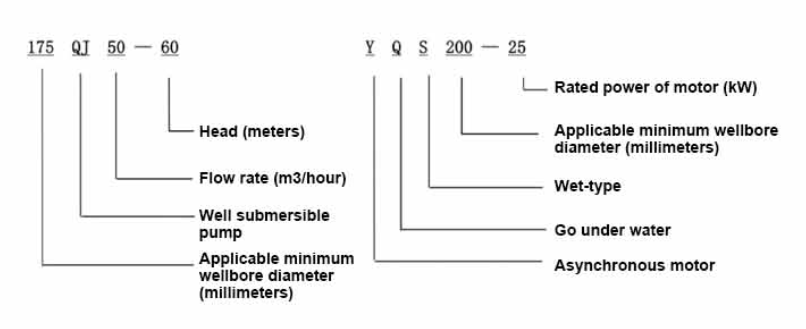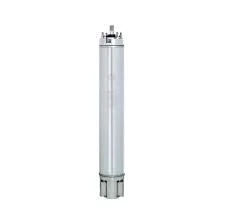märts . 04, 2025 08:41 Back to list
3in submersible well pump
Experiencing issues with your submersible well pump can be a daunting task, especially when you're relying on it to deliver essential water to your household or operations. These pumps are generally robust and durable, but like any machinery, they are susceptible to wear, tear, and malfunction over time. Understanding the cause of the problem through common symptoms and potential fixes is vital for ensuring a reliable water supply.
The pump may simply fail to start due to a jammed impeller. Debris and sediments can obstruct the impeller’s motion, leading to stalling. Unclogging the impeller can solve the problem; however, repeated issues of this nature suggest a need for a more robust filtration system or repositioning the pump to mitigate debris entry. Occasionally, the pump itself is to blame due to mechanical failure. Submersible pumps comprise an array of moving parts that undergo significant stress. Wear and tear over time can lead to failure of internal components such as bearings, seals, or the motor. Determining motor functionality involves checking with a multimeter; however, any repair or replacement of motor components should preferably be conducted by a professional. Doing so ensures adherence to safety protocols and leverages expert precision for troubleshooting and repair. If issues persist despite these attempts, examining the depth of the pump relative to the water table is prudent. Changes in water level naturally occur and might leave the pump inadequately submerged, particularly during dry seasons. Adjusting the pump’s depth might be necessary to align with fluctuating water levels. Seasoned experts recommend regular checks and maintenance to extend the lifespan of submersible well pumps. Routine inspections involve checking power connections, cleaning filters, and evaluating system pressure. An annual professional inspection could serve as proactive maintenance, uncovering potential issues before they transmute into substantial problems. In conclusion, diagnosing a malfunctioning submersible well pump involves a systematic approach. Begin with simple checks for power disruptions and clogged filters before progressing to more intricate inspections of pressure switches and mechanical components. Employ regular maintenance to preempt future disruptions, and when in doubt, solicit professional input to ensure the reliability and safety of the water supply system. Adhering to these guidelines not only enhances operational efficiency but also fortifies against unforeseen failures, thereby affirming trust and authority in managing your water pumping needs.


The pump may simply fail to start due to a jammed impeller. Debris and sediments can obstruct the impeller’s motion, leading to stalling. Unclogging the impeller can solve the problem; however, repeated issues of this nature suggest a need for a more robust filtration system or repositioning the pump to mitigate debris entry. Occasionally, the pump itself is to blame due to mechanical failure. Submersible pumps comprise an array of moving parts that undergo significant stress. Wear and tear over time can lead to failure of internal components such as bearings, seals, or the motor. Determining motor functionality involves checking with a multimeter; however, any repair or replacement of motor components should preferably be conducted by a professional. Doing so ensures adherence to safety protocols and leverages expert precision for troubleshooting and repair. If issues persist despite these attempts, examining the depth of the pump relative to the water table is prudent. Changes in water level naturally occur and might leave the pump inadequately submerged, particularly during dry seasons. Adjusting the pump’s depth might be necessary to align with fluctuating water levels. Seasoned experts recommend regular checks and maintenance to extend the lifespan of submersible well pumps. Routine inspections involve checking power connections, cleaning filters, and evaluating system pressure. An annual professional inspection could serve as proactive maintenance, uncovering potential issues before they transmute into substantial problems. In conclusion, diagnosing a malfunctioning submersible well pump involves a systematic approach. Begin with simple checks for power disruptions and clogged filters before progressing to more intricate inspections of pressure switches and mechanical components. Employ regular maintenance to preempt future disruptions, and when in doubt, solicit professional input to ensure the reliability and safety of the water supply system. Adhering to these guidelines not only enhances operational efficiency but also fortifies against unforeseen failures, thereby affirming trust and authority in managing your water pumping needs.
Latest news
-
Water Pumps: Solutions for Every Need
NewsJul.30,2025
-
Submersible Well Pumps: Reliable Water Solutions
NewsJul.30,2025
-
Stainless Steel Water Pumps: Quality and Durability
NewsJul.30,2025
-
Powerful Water Pumps: Your Solution for Efficient Water Management
NewsJul.30,2025
-
Oil vs Water Filled Submersible Pumps: Which is Better?
NewsJul.30,2025
-
Deep Well Pumps: Power and Reliability
NewsJul.30,2025
-
 Water Pumps: Solutions for Every NeedWhen it comes to handling dirty water, the dirty water pump is a must-have.Detail
Water Pumps: Solutions for Every NeedWhen it comes to handling dirty water, the dirty water pump is a must-have.Detail -
 Submersible Well Pumps: Reliable Water SolutionsWhen it comes to ensuring a reliable water supply, submersible well pumps are a top choice.Detail
Submersible Well Pumps: Reliable Water SolutionsWhen it comes to ensuring a reliable water supply, submersible well pumps are a top choice.Detail -
 Stainless Steel Water Pumps: Quality and DurabilityWhen it comes to choosing a water pump, the stainless steel water pump price is a crucial factor.Detail
Stainless Steel Water Pumps: Quality and DurabilityWhen it comes to choosing a water pump, the stainless steel water pump price is a crucial factor.Detail
